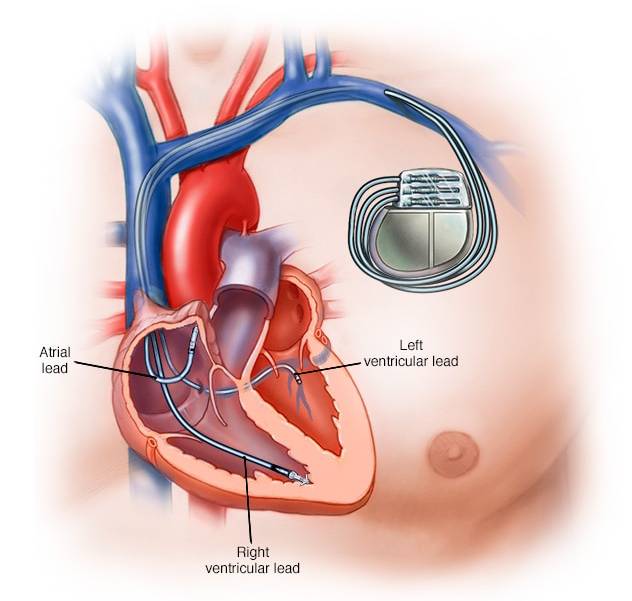A pacemaker insertion is the implantation of a small electronic device that is usually placed in the chest (just below the collarbone) to help regulate slow electrical problems with the heart. A pacemaker may be recommended to ensure that the heartbeat does not slow to a dangerously low rate.
The pacemaker sends electrical pulses to your heart to keep it beating regularly and not too slowly.
Having a pacemaker can significantly improve your quality of life if you have problems with a slow heart rate. The device can be lifesaving for some people.
Types of pacemakers
Your doctor will decide what type of pacemaker you need based on your heart condition. Your doctor also determines the minimum rate (lowest heart rate) to set your pacemaker.
- Leadless Pacemaker – Self-contained device without connecting leads (wires) and generator
- Biventricular Pacemaker – also called cardiac resynchronization therapy (CRT)

Why do I need a pacemaker?
The heart is essentially a pump made of muscle, which is controlled by electrical signals.
These signals can become disrupted for several reasons, which can lead to a number of potentially dangerous heart conditions, such as:
How is a pacemaker fitted?
Having a pacemaker implanted is a relatively straightforward process.
What are the risks of the procedure?
Possible risks of pacemaker include, but are not limited to, the following:

 WhatsApp us
WhatsApp us